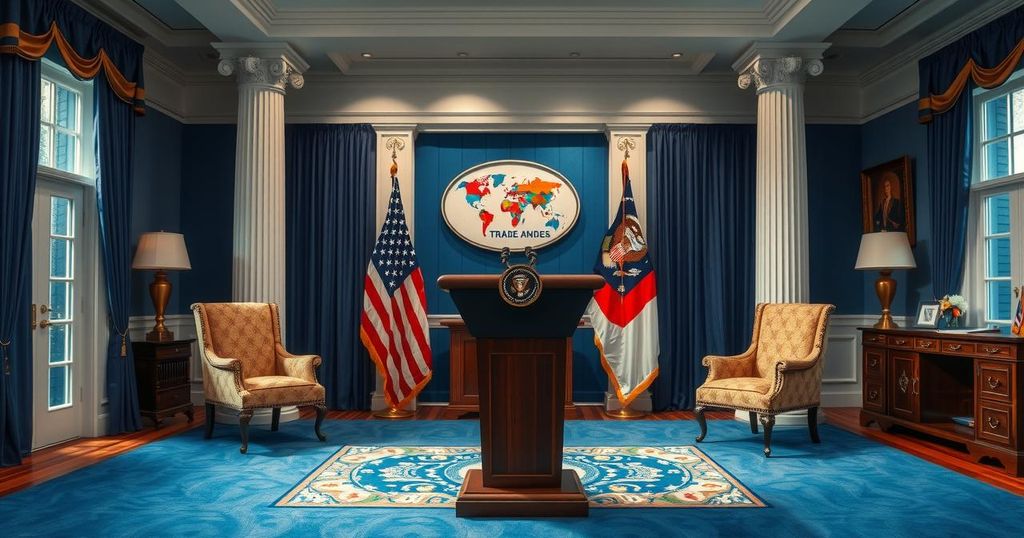Trump Signals Flexibility in Trade Strategy Amid Tariff Plans and Market Uncertainty
President Trump suggested flexibility in U.S.-China trade talks as he advances sweeping tariff plans effective April 2, amidst volatile stock market reactions and declining GDP forecasts. Despite hopes for negotiation, the Trump administration remains committed to imposing strict tariffs to balance America’s trade deficit, raising concerns about rising inflation and stagflation risks as consumer sentiment worsens.
President Donald Trump has hinted at potential “flexibility” in his tariff strategy regarding China, even while moving forward with comprehensive global tariff plans effective April 2. His remarks, made during a session in the Oval Office, conveyed that he might be willing to discuss trade issues with China, although he emphasized his commitment to “fair and reciprocal” tariffs from February’s proposals.
Stock markets reacted to Trump’s comments with volatility, briefly rising before declining again. The White House reiterated its stance, underscoring a unified goal across the administration to ensure equitable trade practices for American industries and workers. Trump expressed hope for conversations with Chinese President Xi Jinping soon, which may influence ongoing negotiations.
Despite these diplomatic overtures, the administration appears resolute on enacting substantial trade levies. Economic forecasts have notably shifted downwards, with the S&P 500 index tracking its fifth consecutive week without gains, reflecting faltering confidence in the U.S. economy amid tariff-related uncertainties.
The Organisation for Economic Co-operation and Development has adjusted its U.S. GDP growth forecasts for 2025 and 2026 to account for potential economic contractions driven by increased trade barriers and geopolitical uncertainties. The OECD warned that such conditions are adversely impacting investments and consumer spending.
While the European Union has postponed retaliation against U.S. tariffs to foster further discussion, it is preparing compensation measures worth up to EUR 26 billion against American imports. The EU spokesperson assured that their defensive response would be calculated to mitigate adverse effects on producers and consumers.
Federal Reserve Chair Jay Powell signaled the potential for transient inflation spikes due to tariffs, indicating that increased policy uncertainty from the tariff strategies could add to inflationary pressures. Trump has imposed a 25% tariff on steel and aluminum, with additional tariffs specifically targeting Chinese goods.
Trump declared April 2 as a pivotal date for American trade, asserting it represented a turning point for the nation’s economic standing. He criticized previous trade dynamics for exploiting the U.S. and expressed a desire for revitalized negotiations aimed at rectifying long-standing trade deficits.
Economic analysts are now sounding alarms about rising stagflation risks as consumer sentiment deteriorates and inflation expectations rise. Factors contributing to this sentiment include ongoing trade policy confusion and heightened tariffs, with the overall economic outlook becoming increasingly pessimistic.
In summary, President Trump’s tariffs may prompt discussions with China, yet the administration’s commitment to stringent trade policies remains steadfast. Market responses indicate growing uncertainty about the economic future, with revisions to GDP forecasts reflecting concerns over tariff impacts. As the date for new tariffs approaches, analysts warn of increased inflation and potential stagflation risks, underscoring the fragility of consumer confidence and investment sentiment amidst the evolving trade landscape.
Original Source: www.nbcnews.com








Post Comment